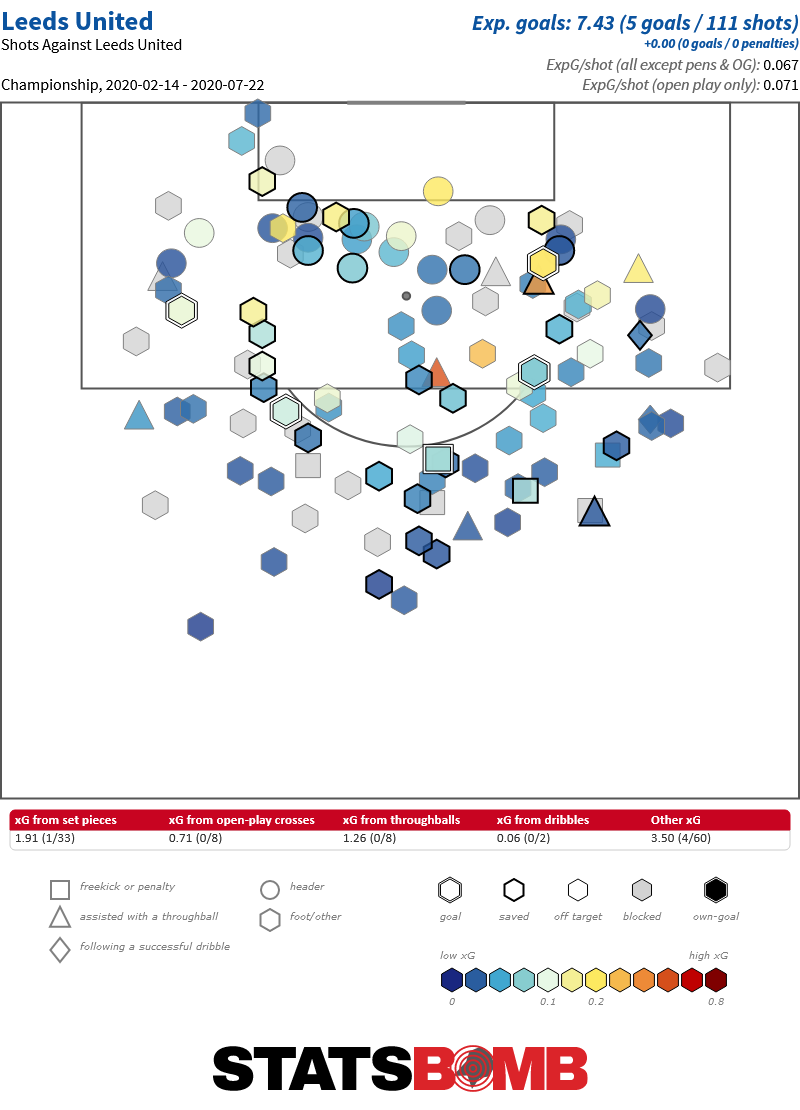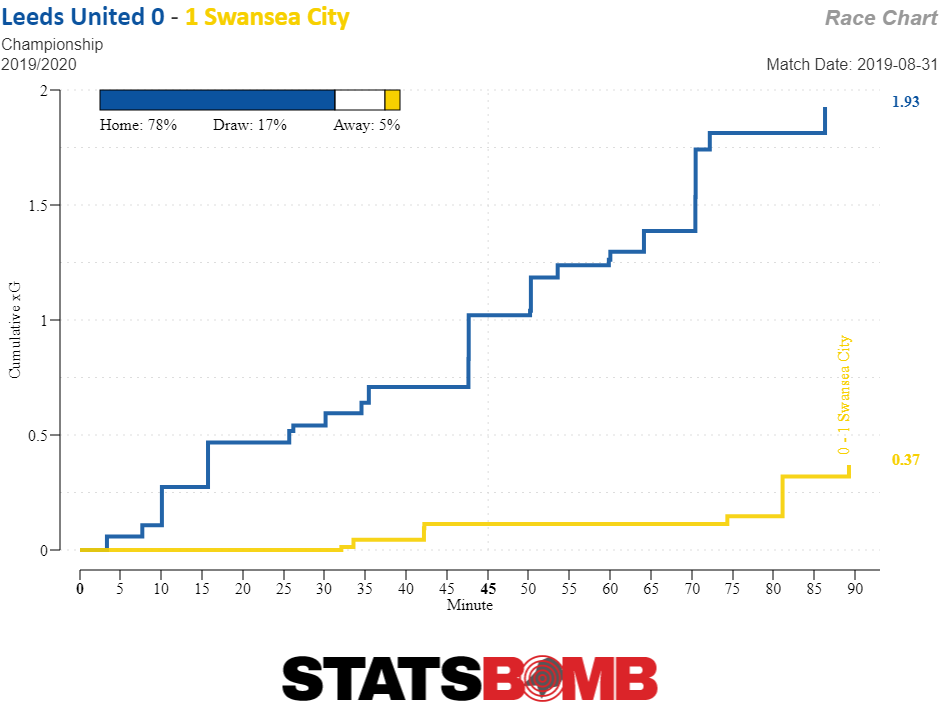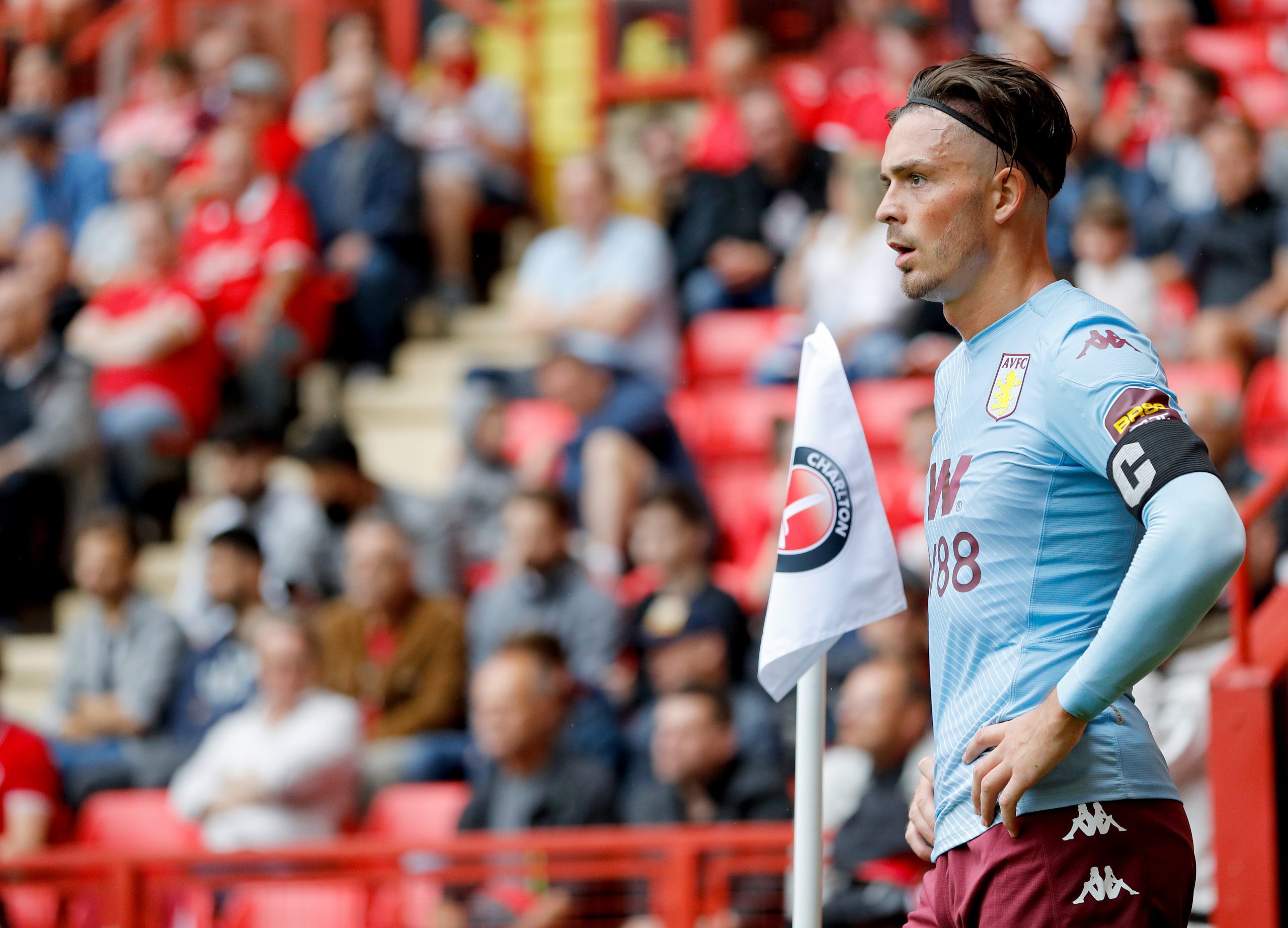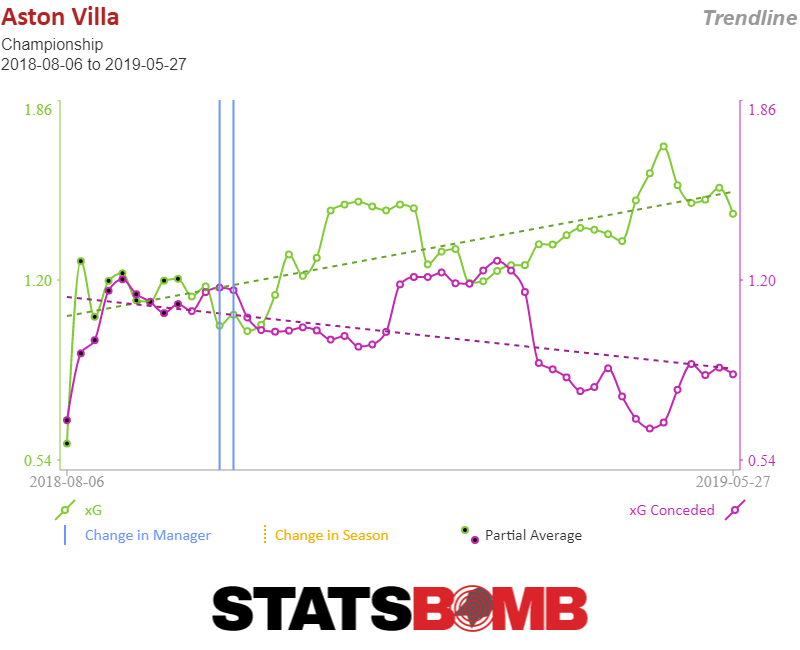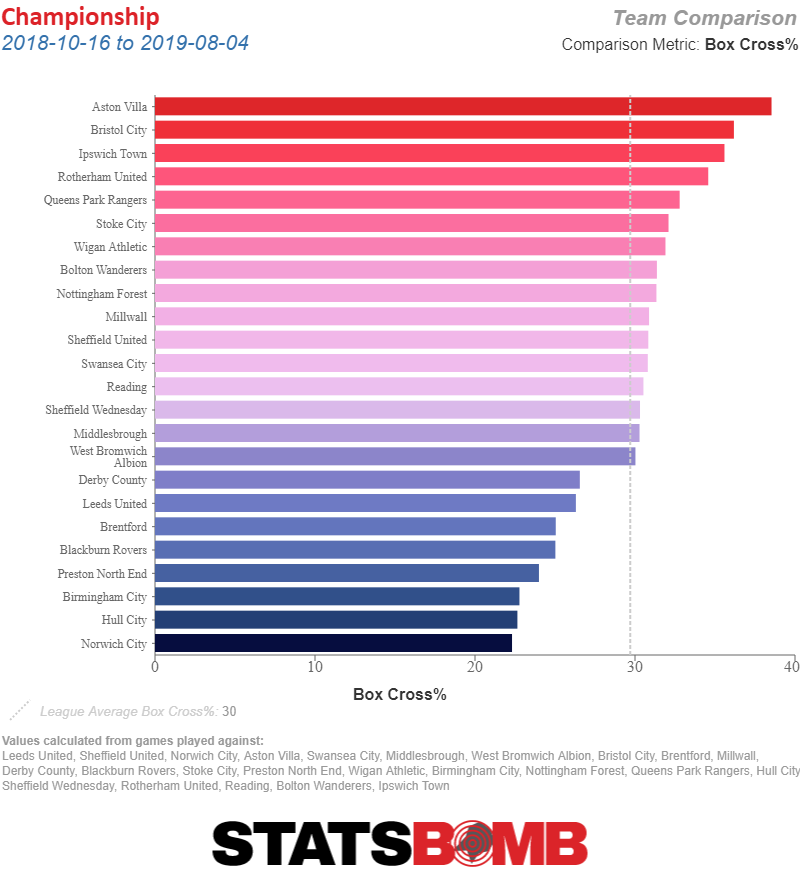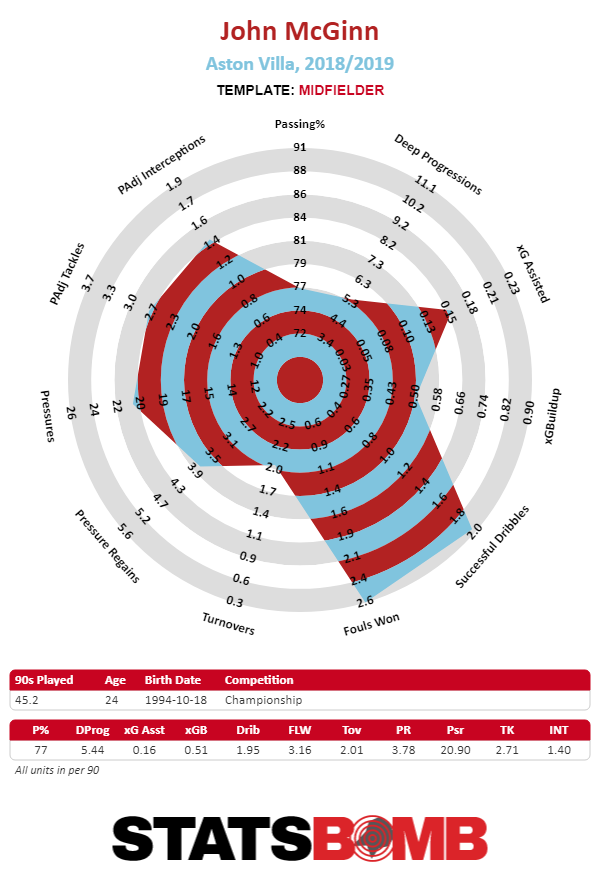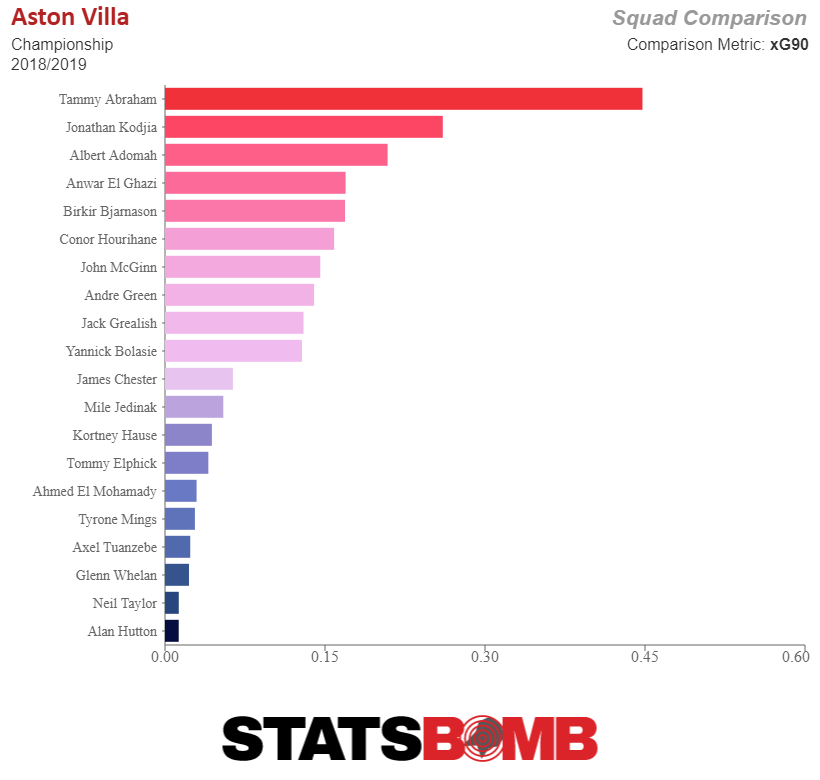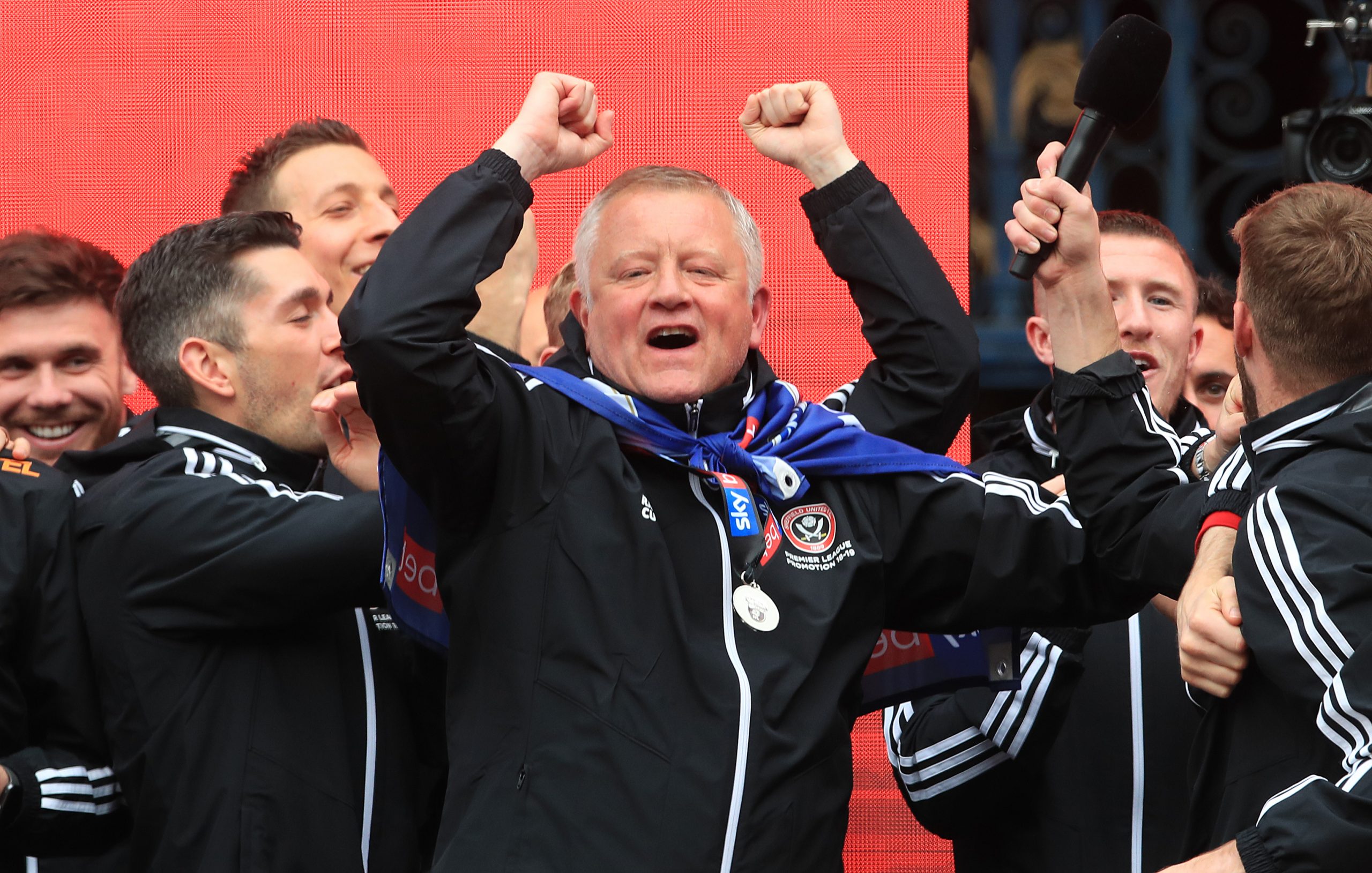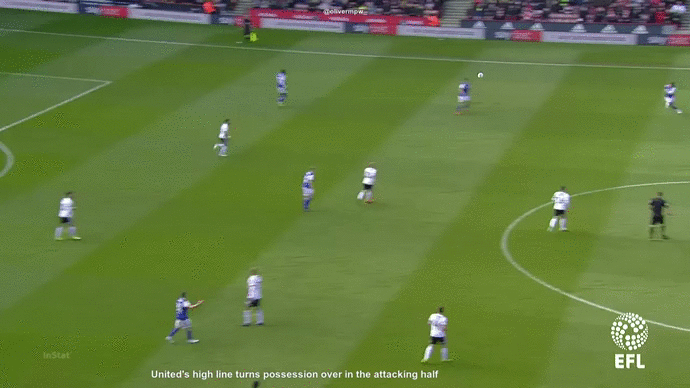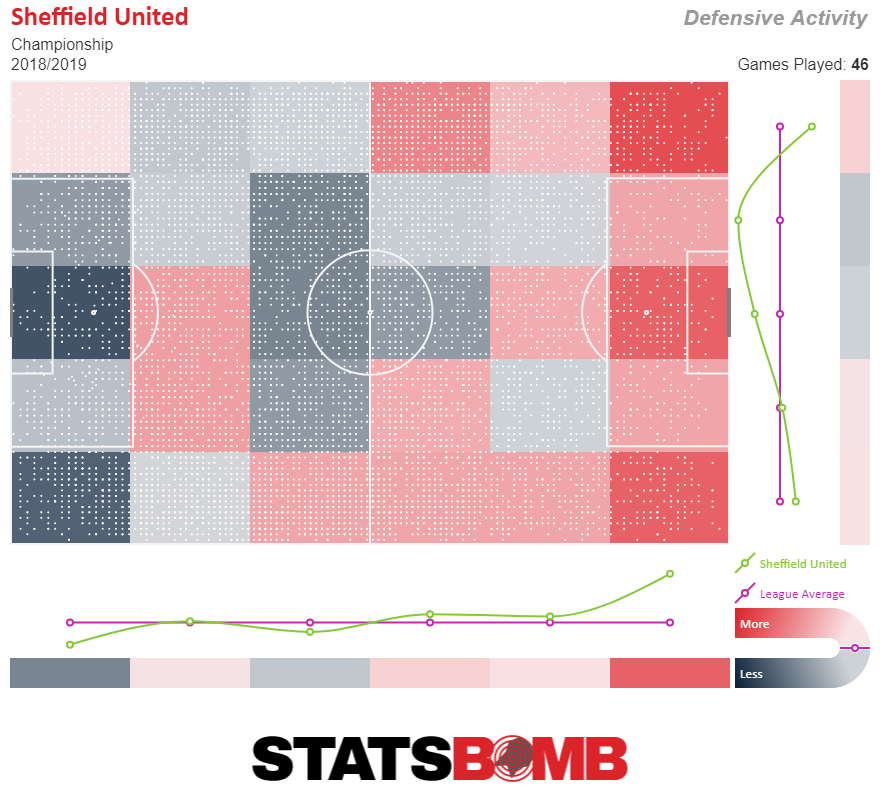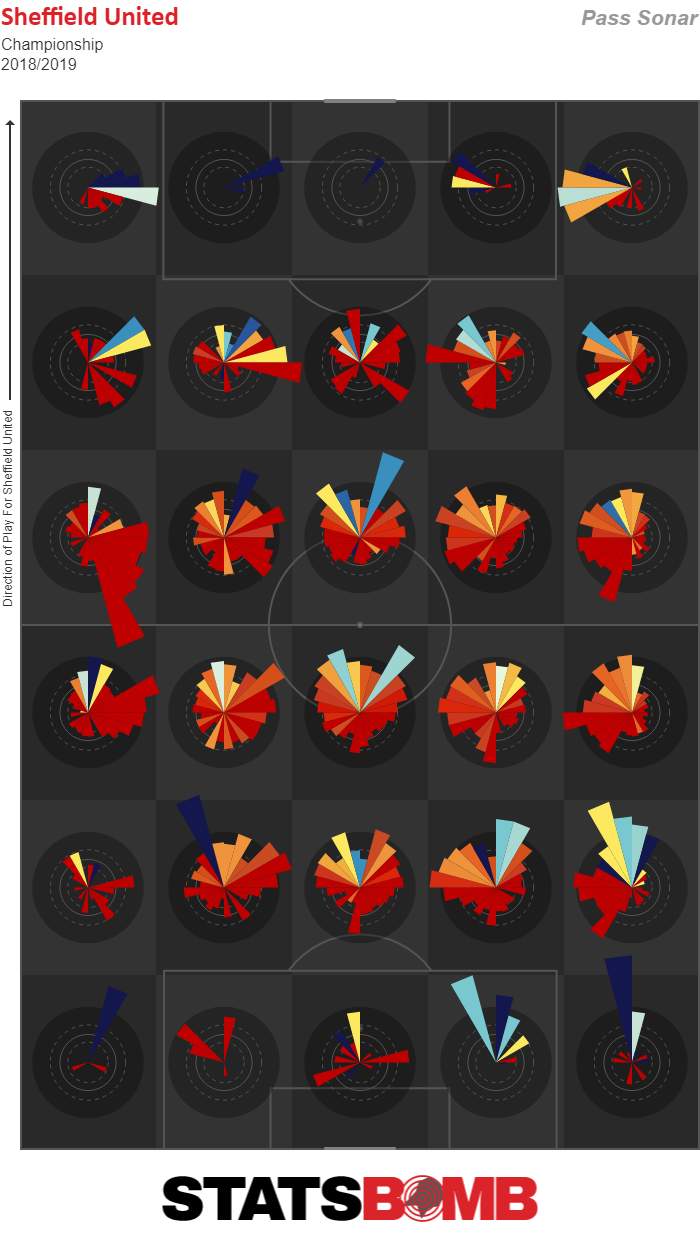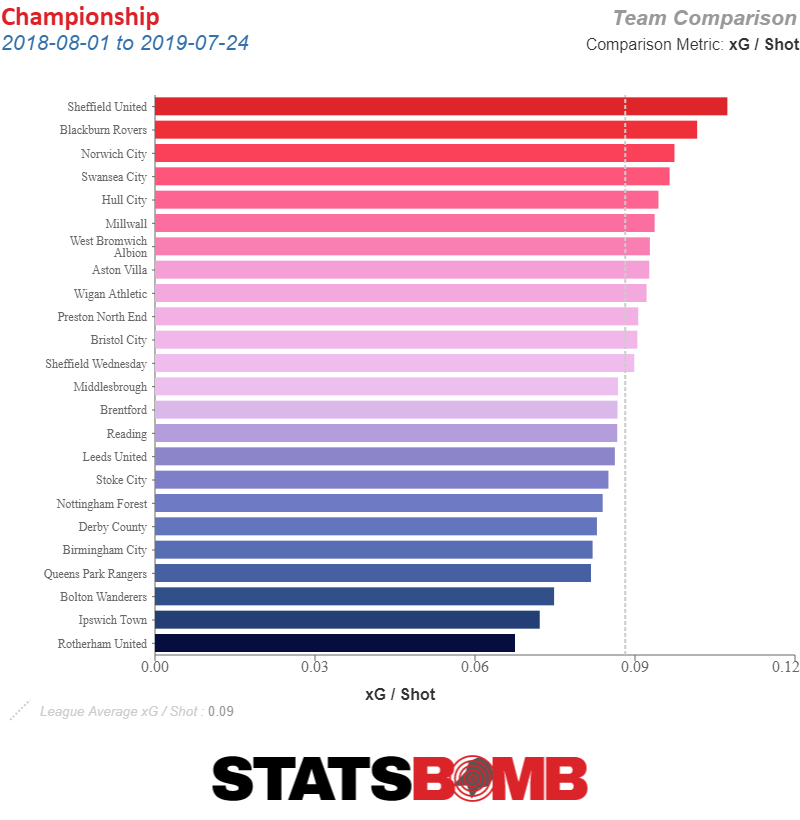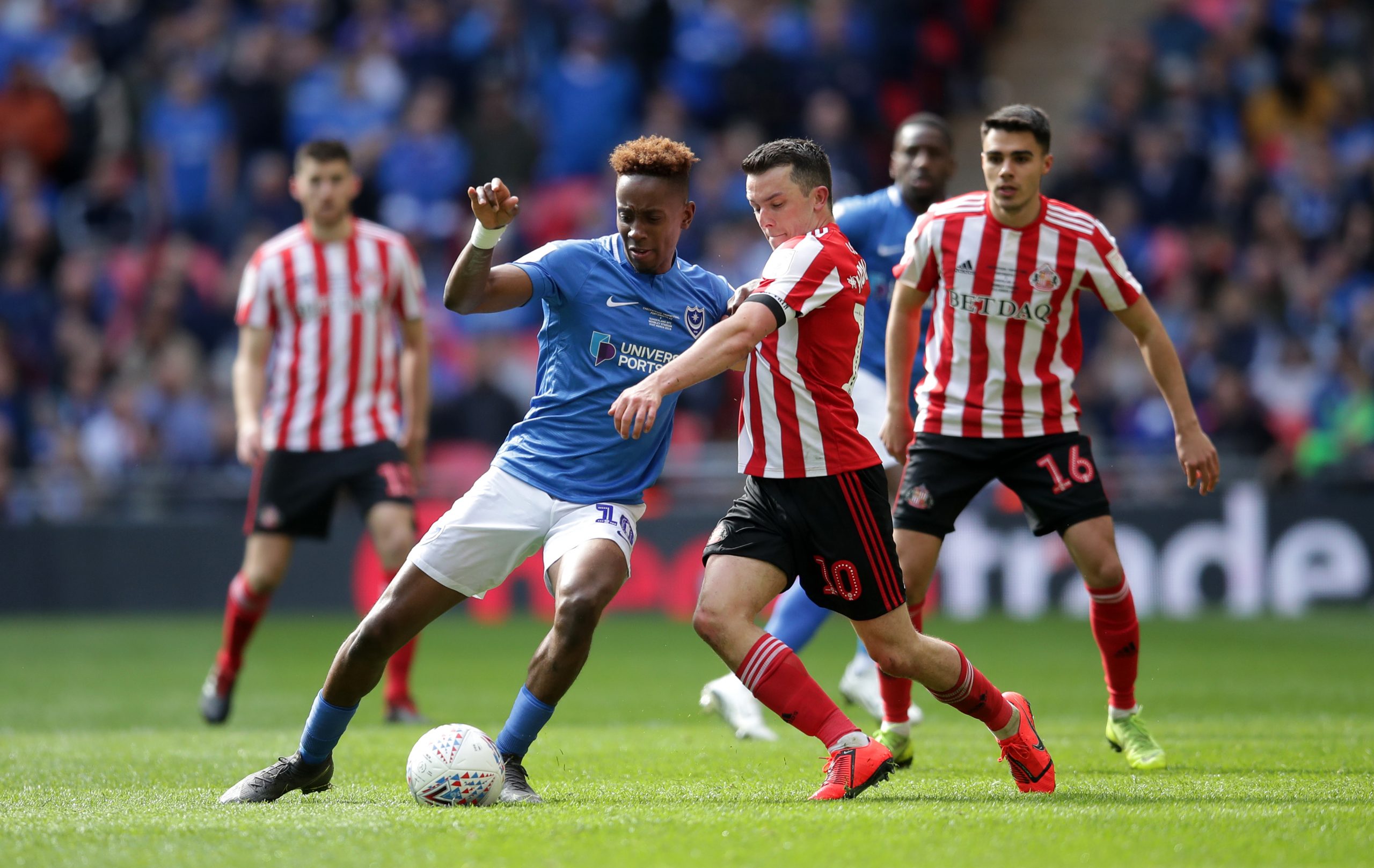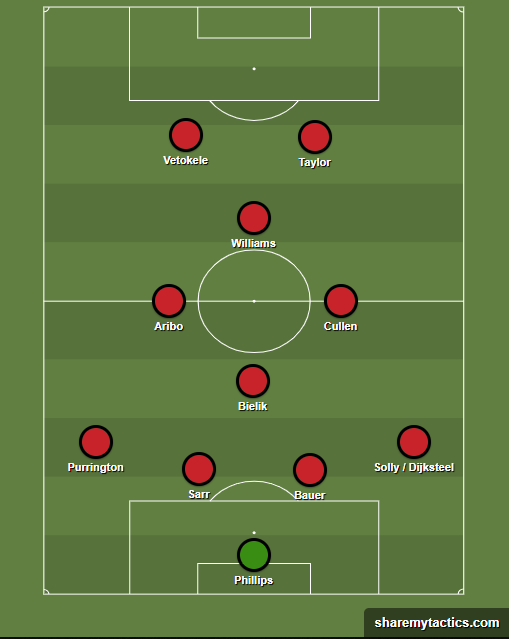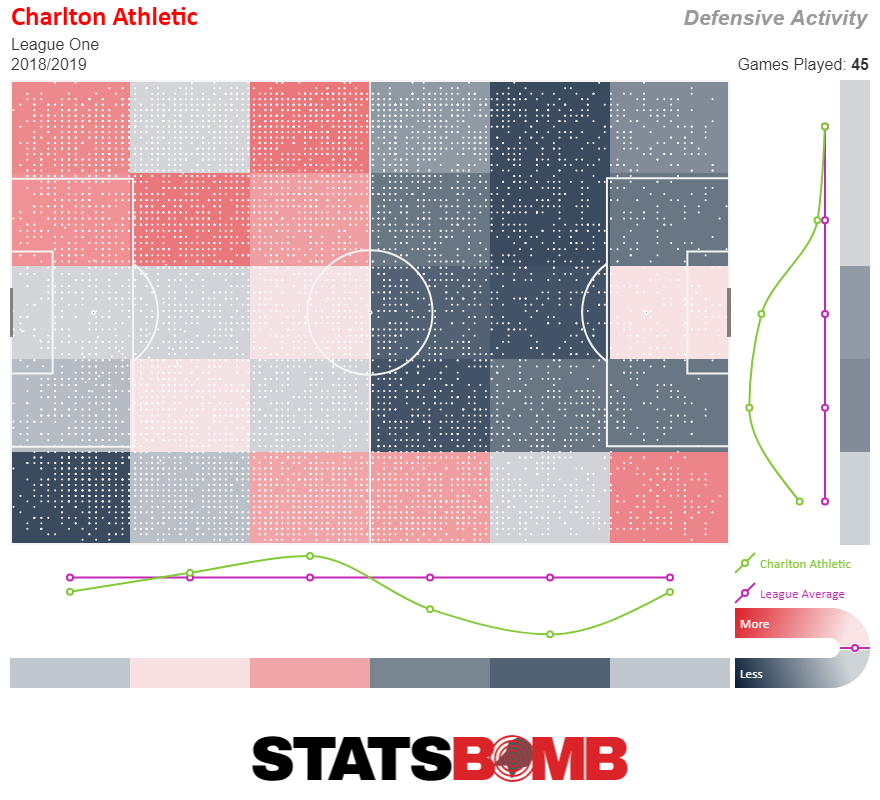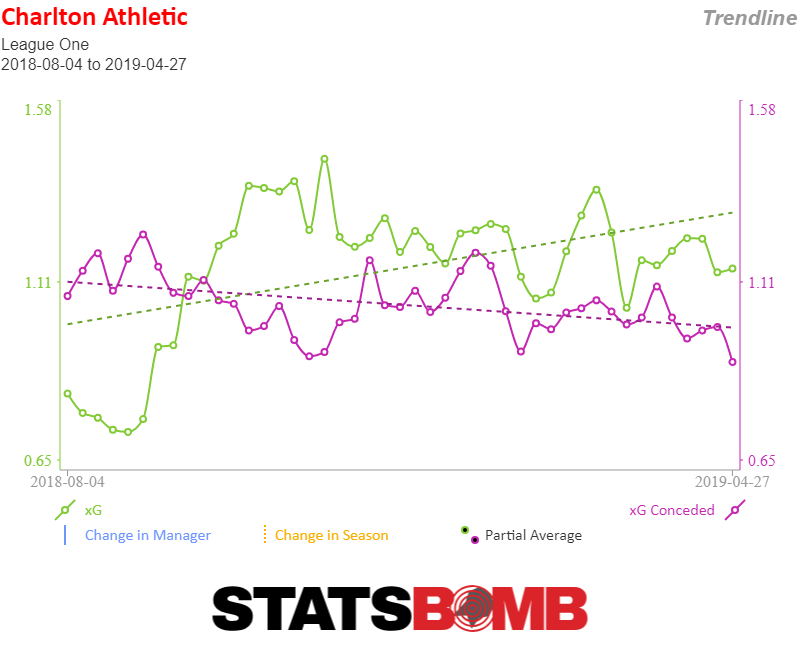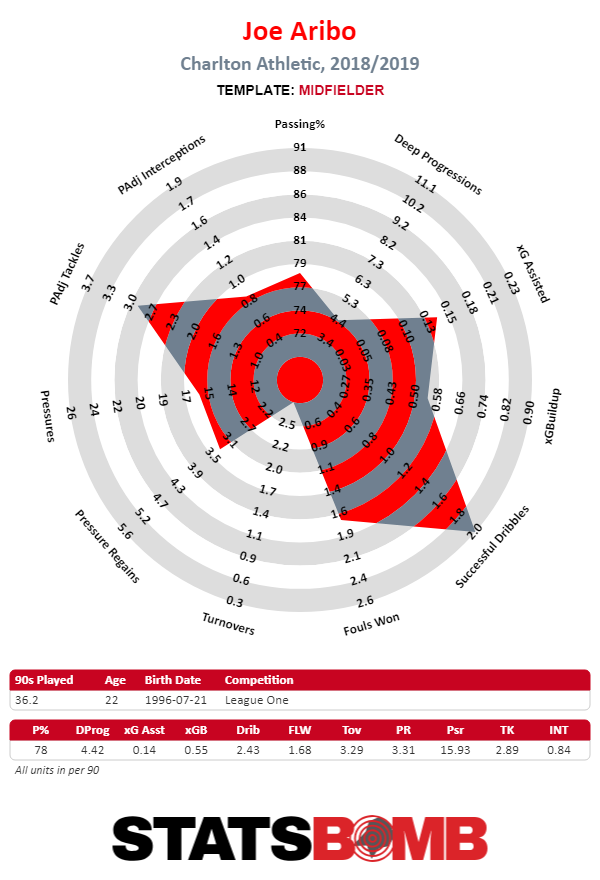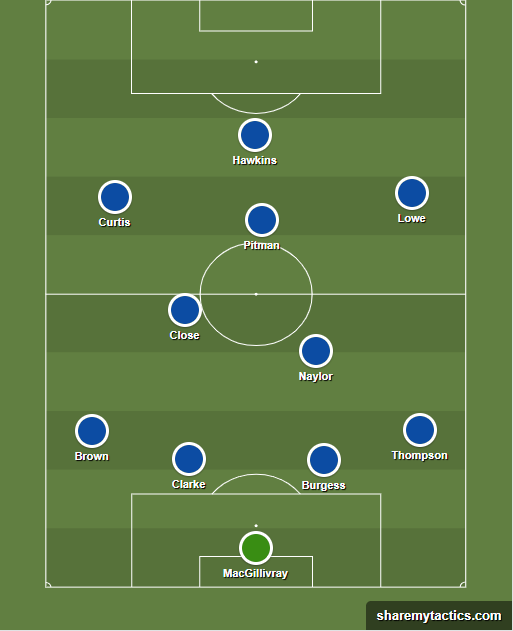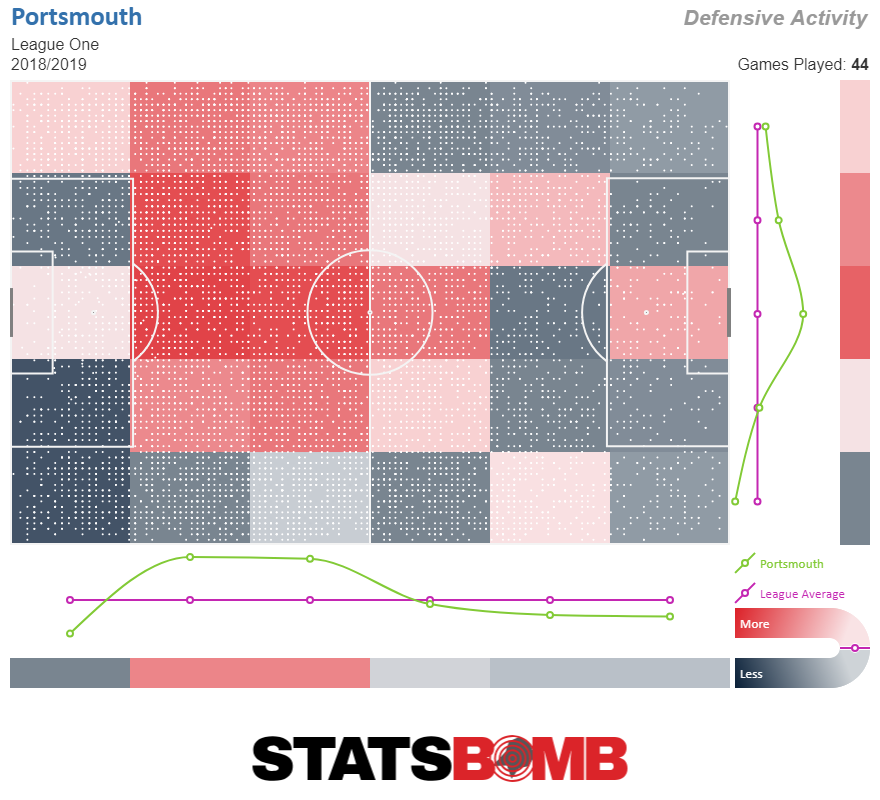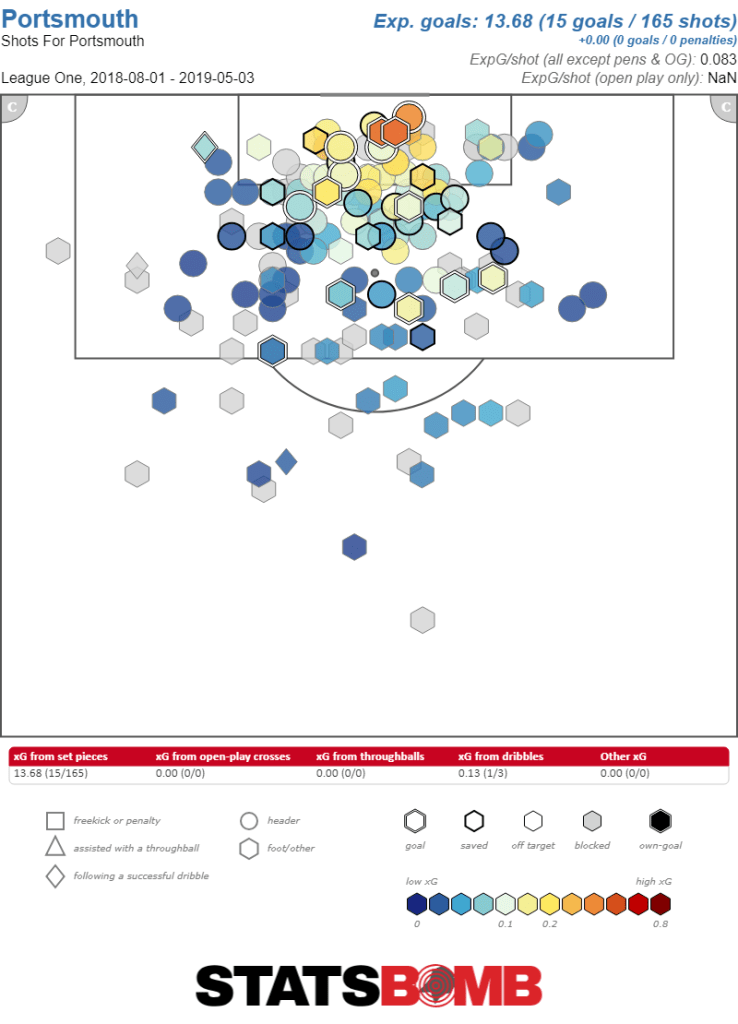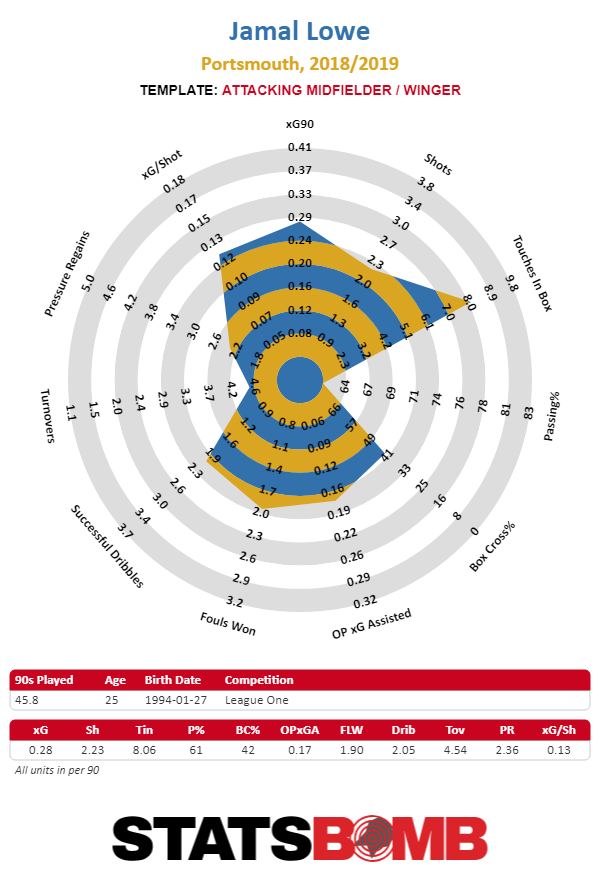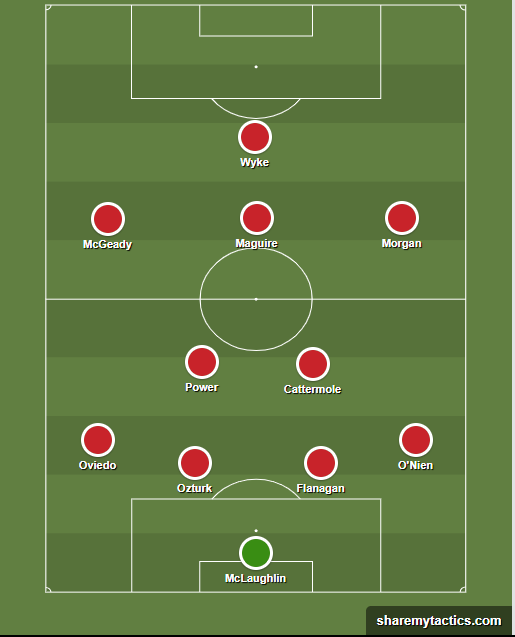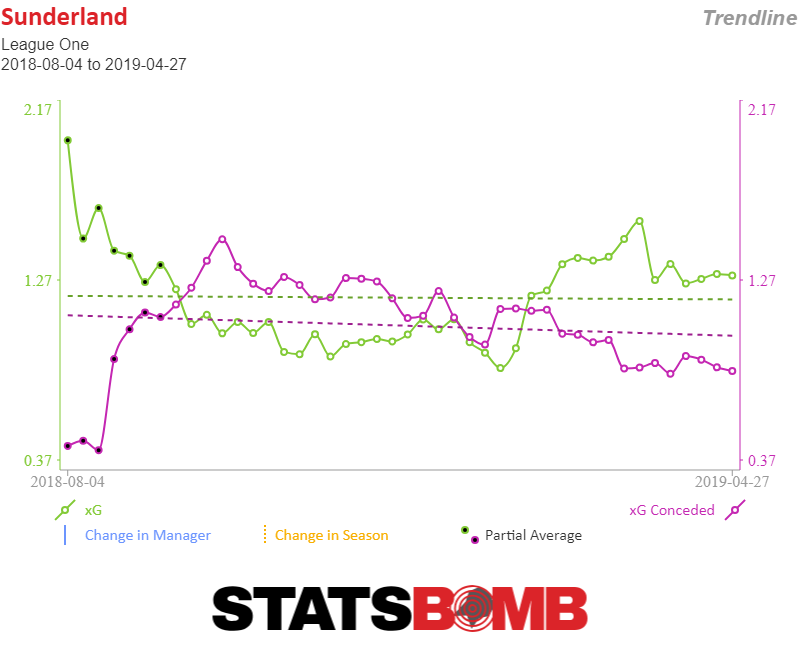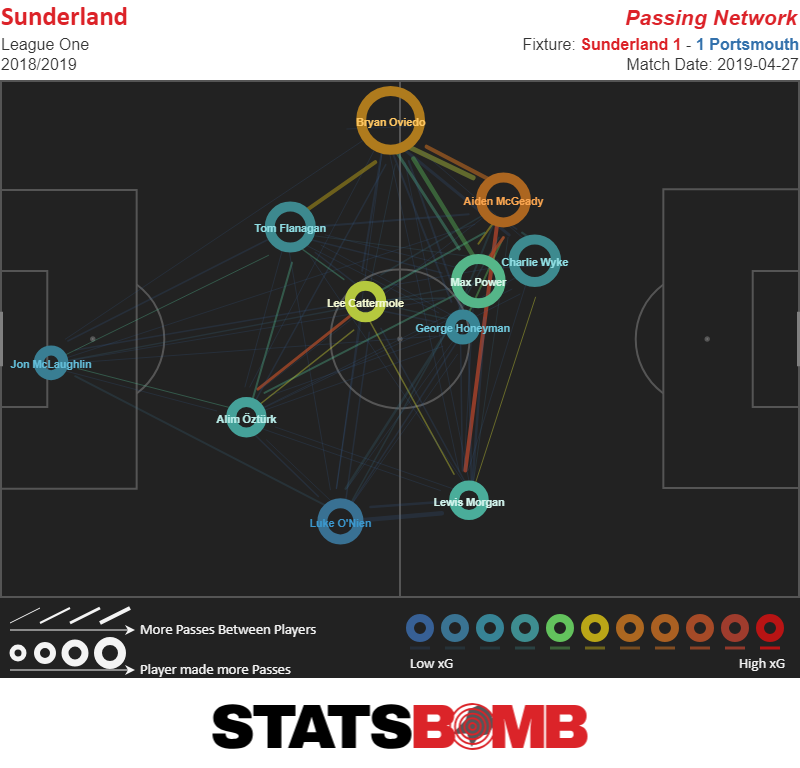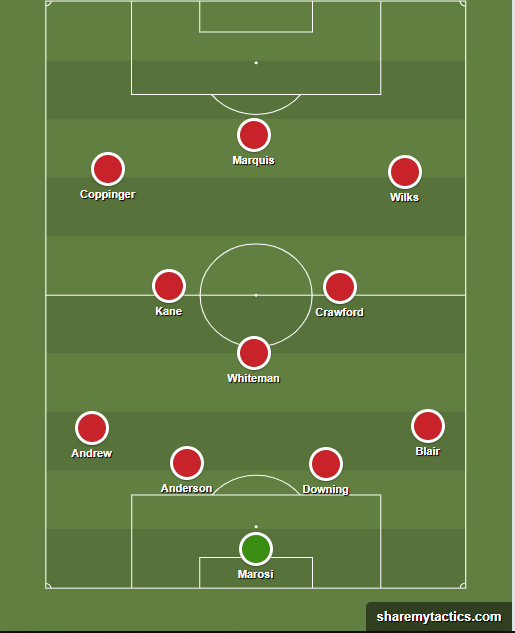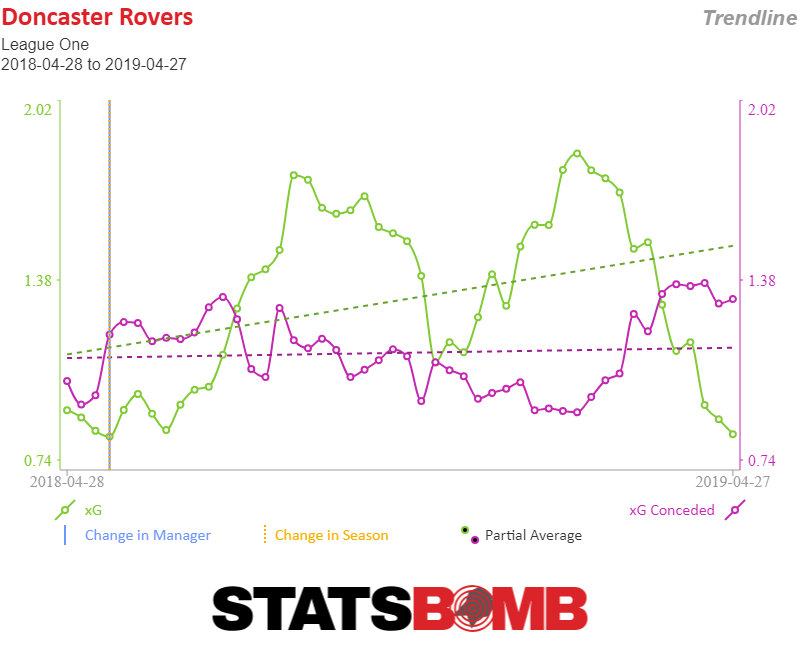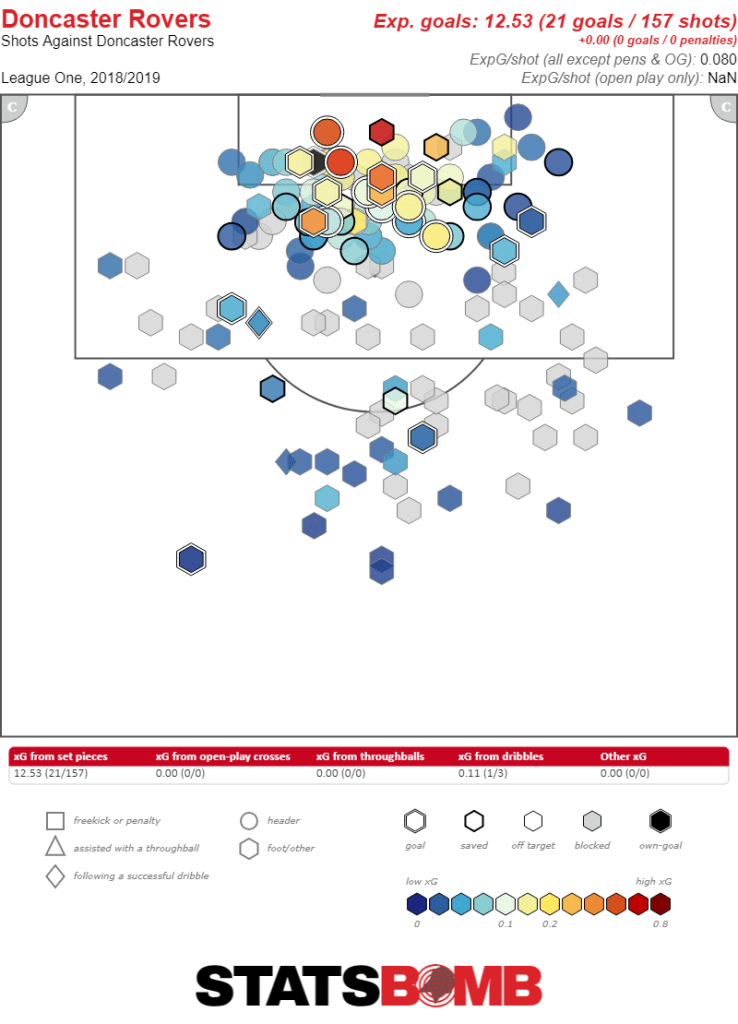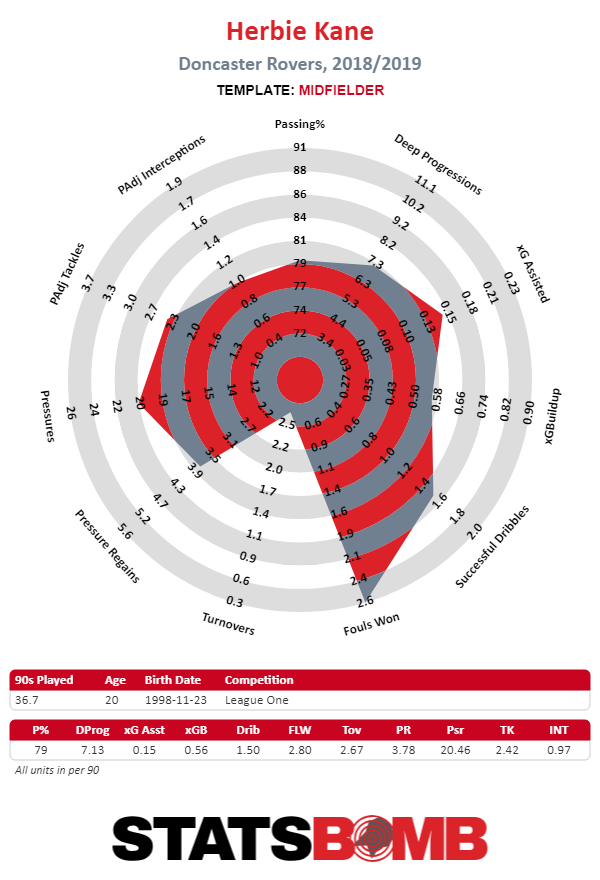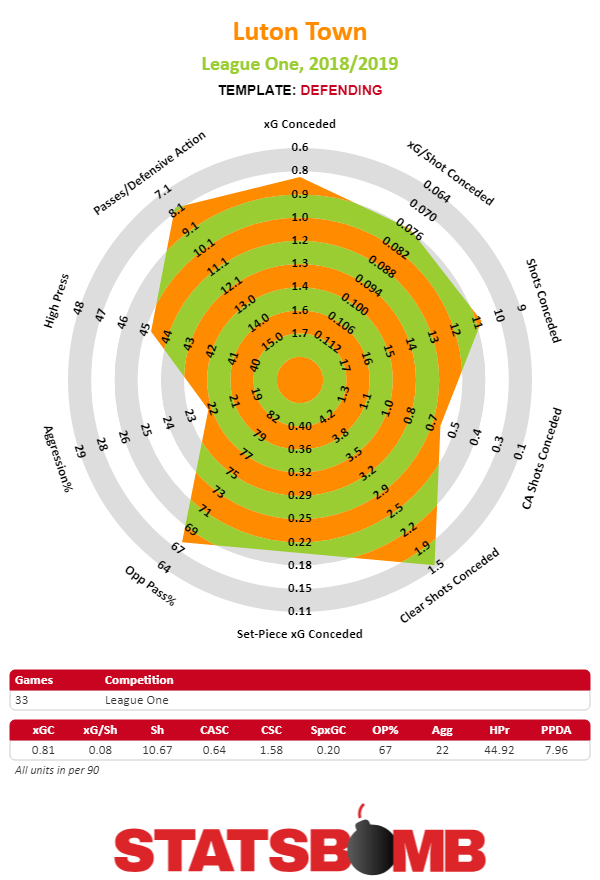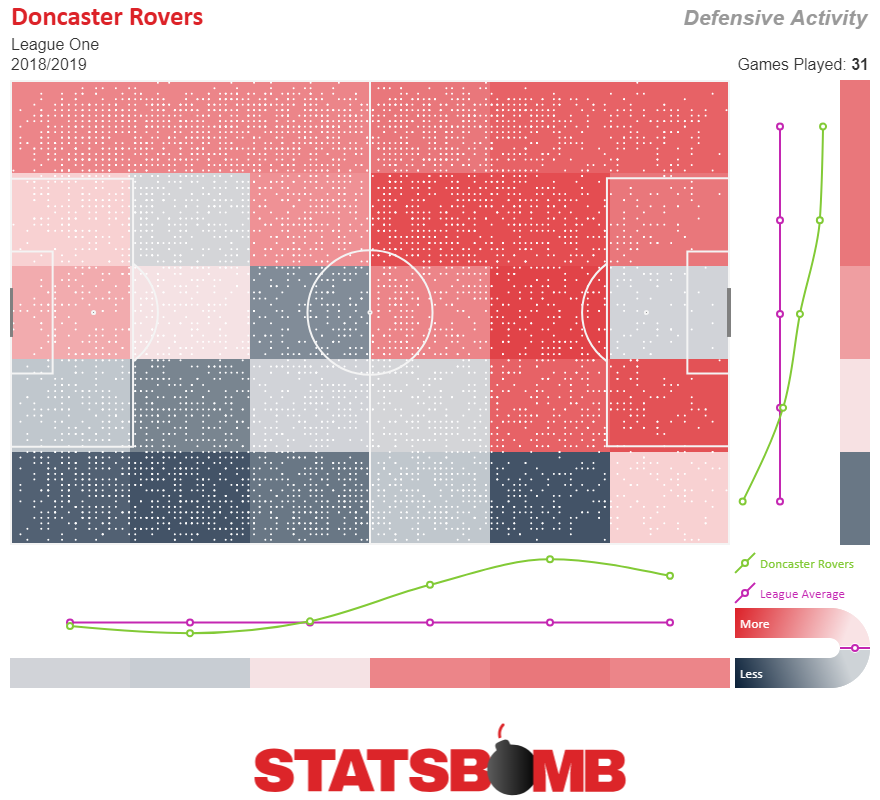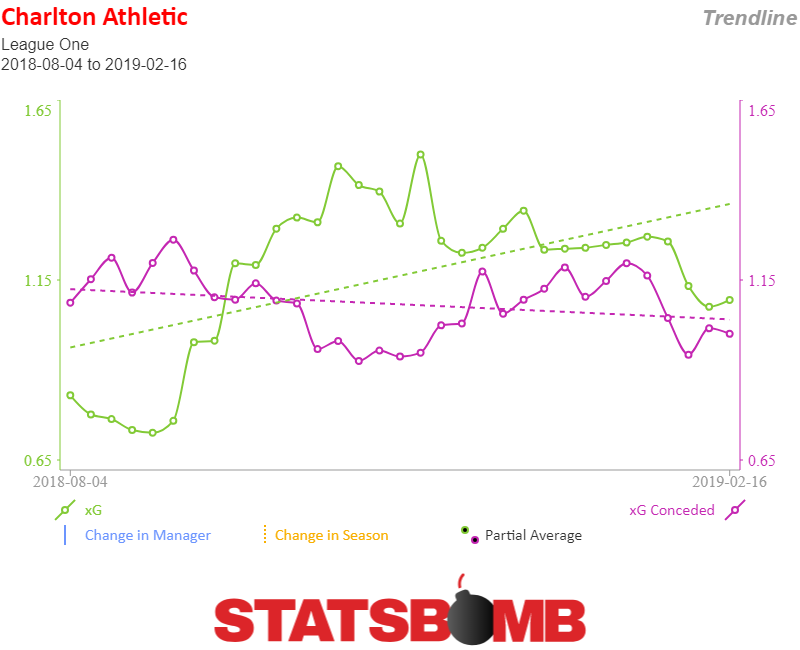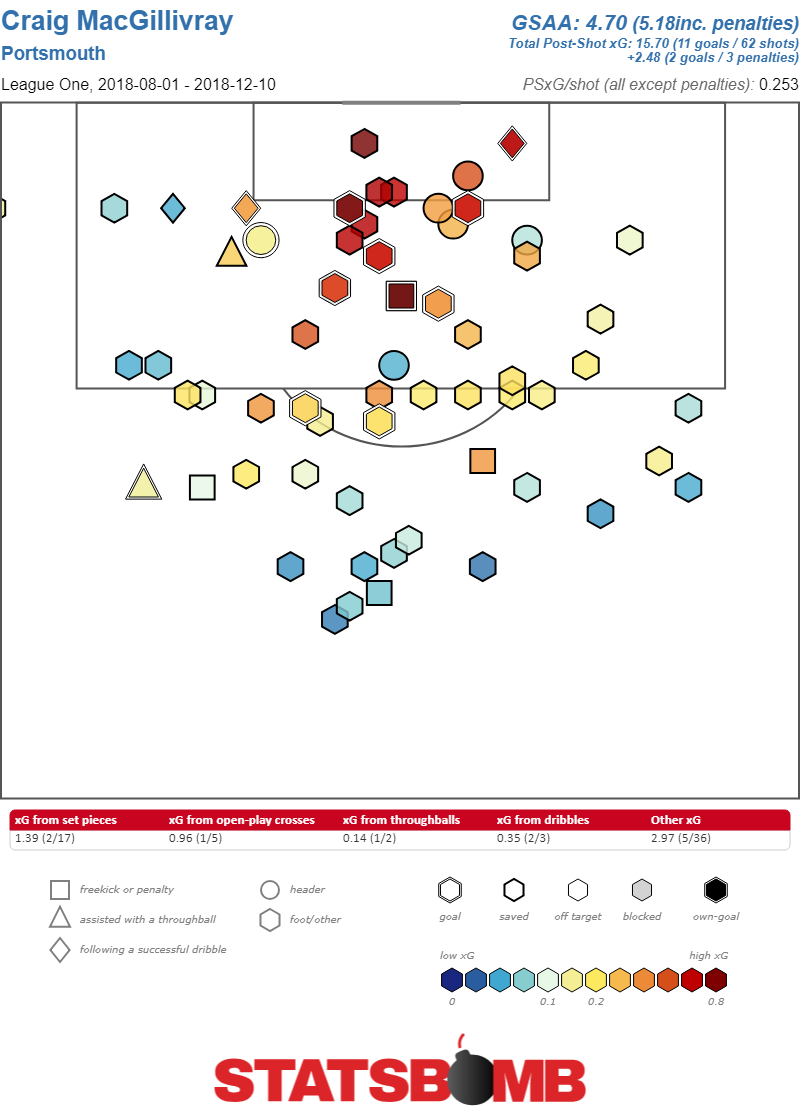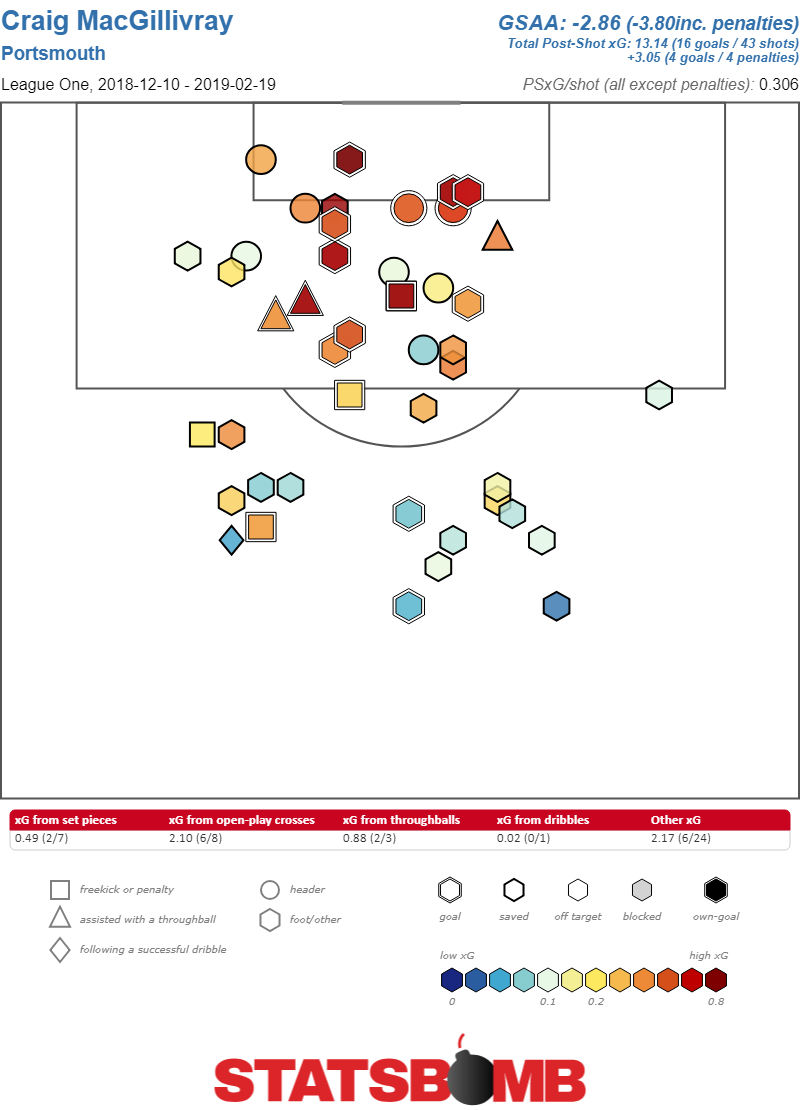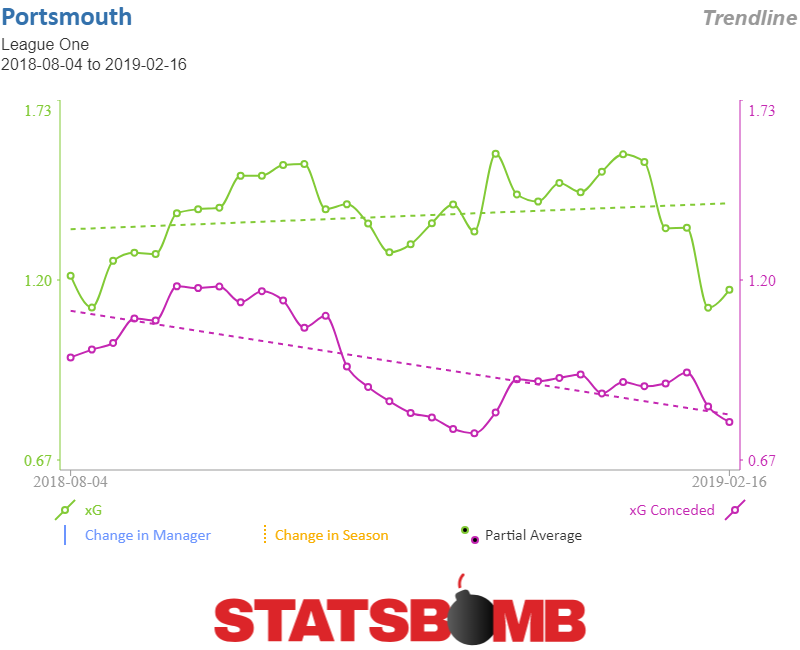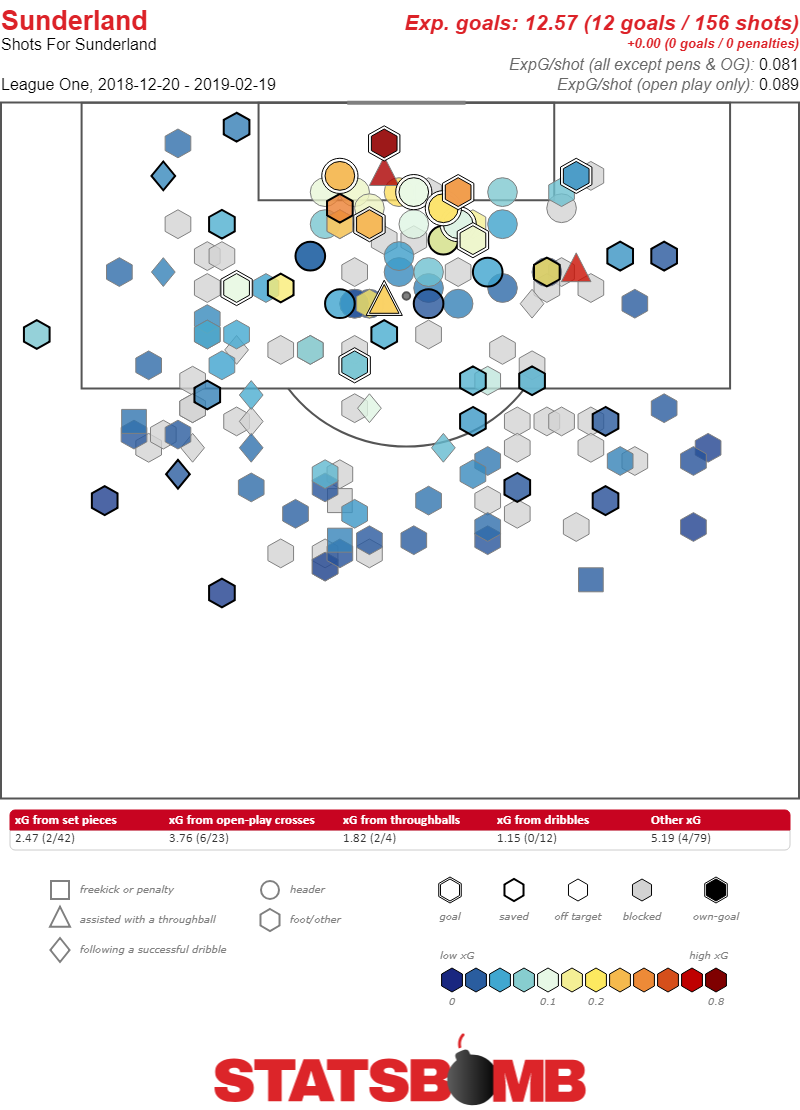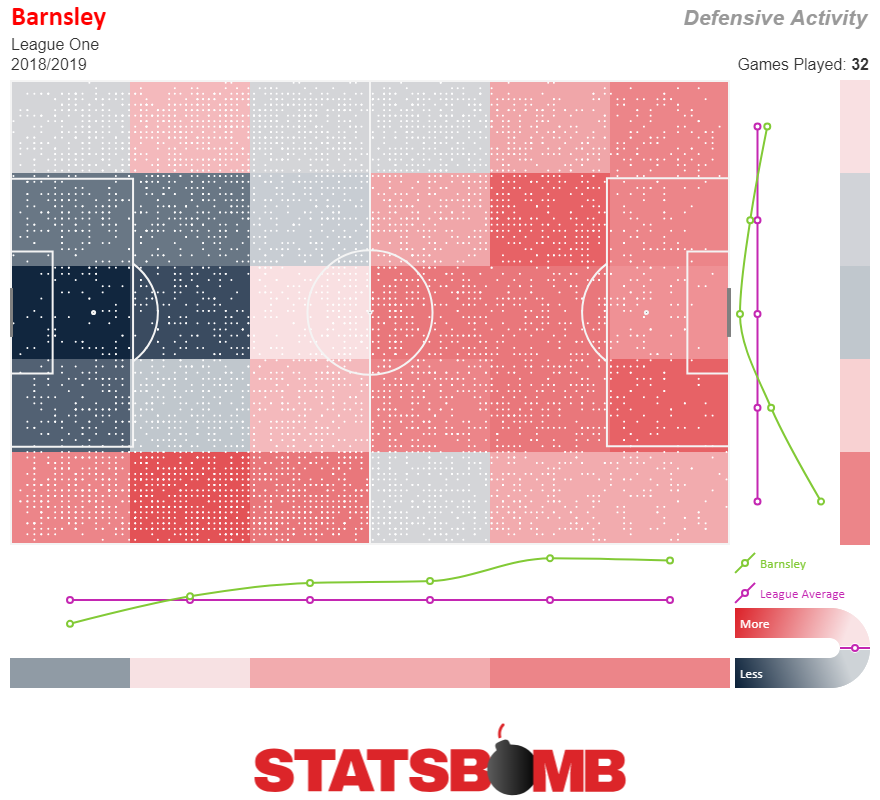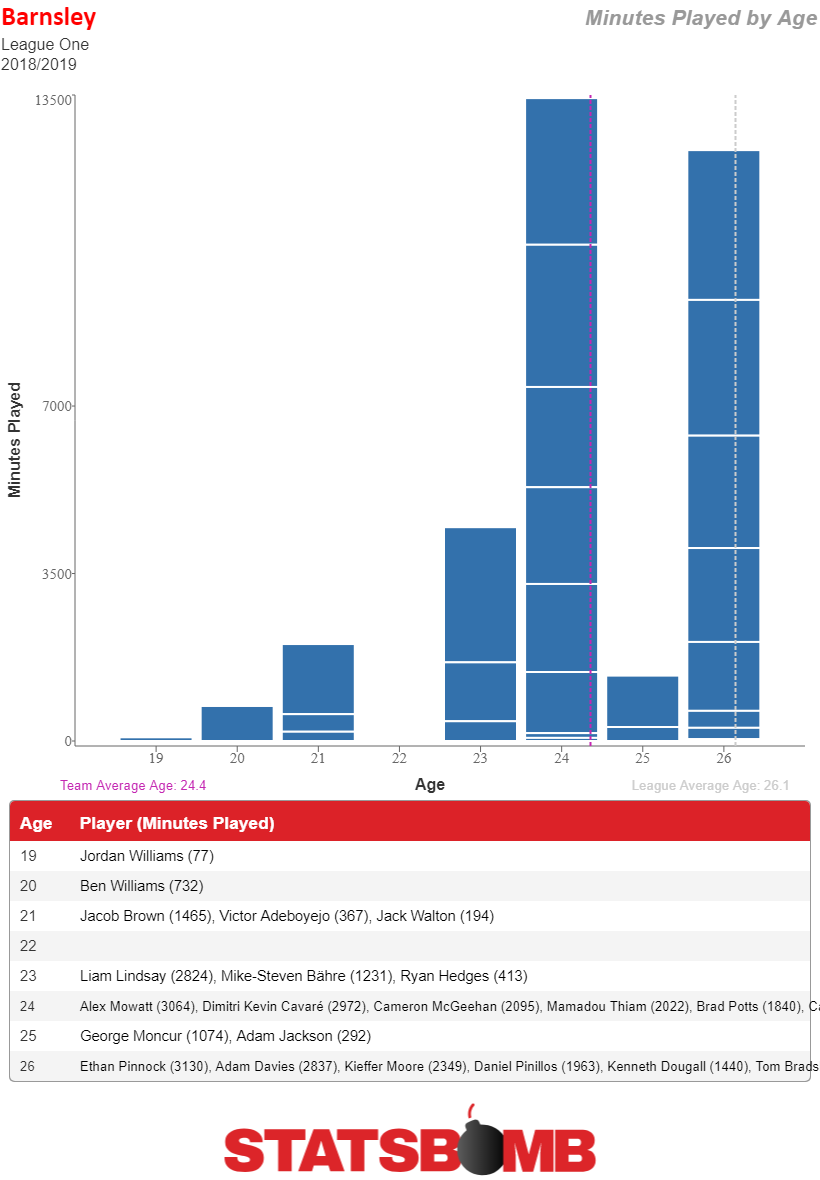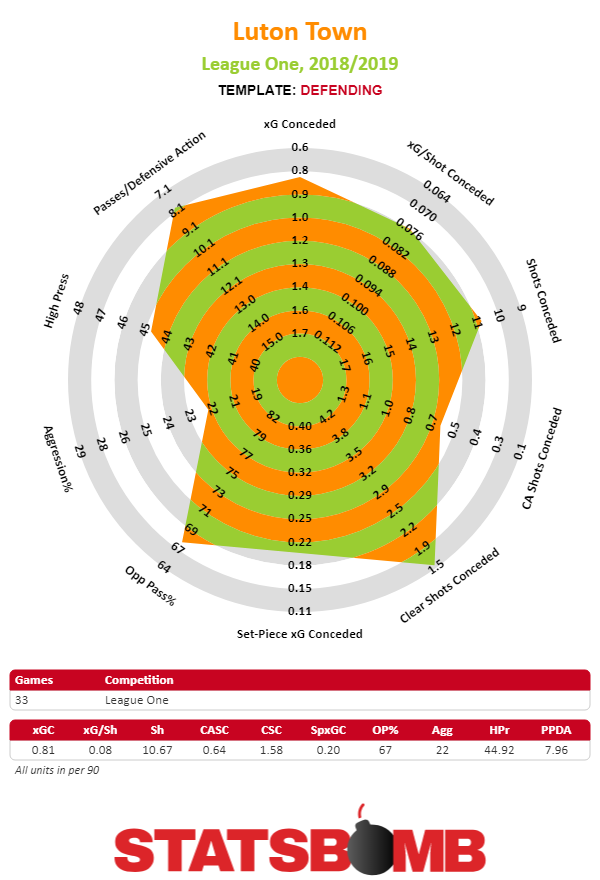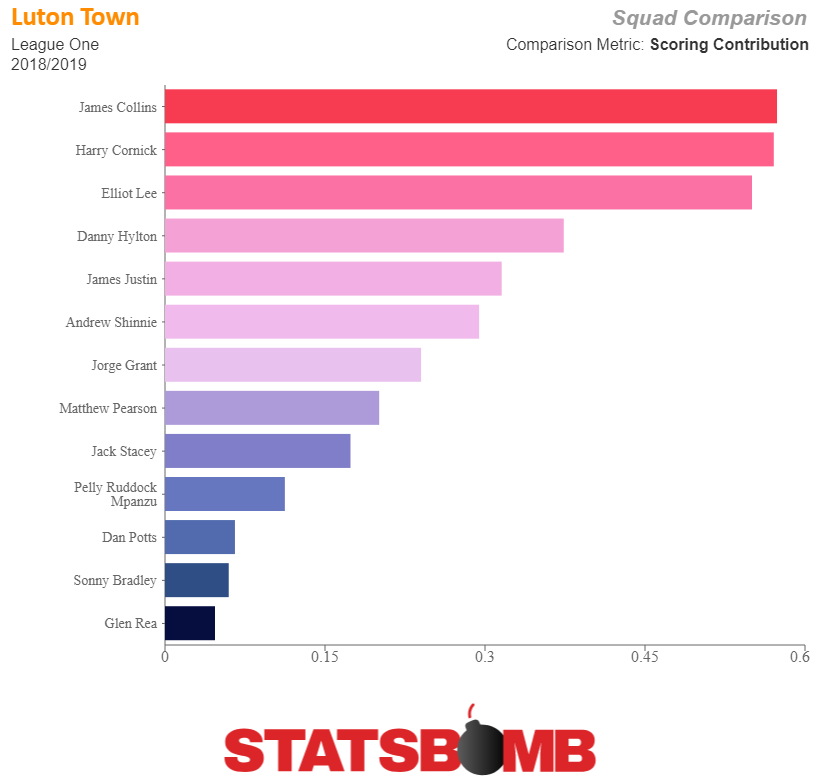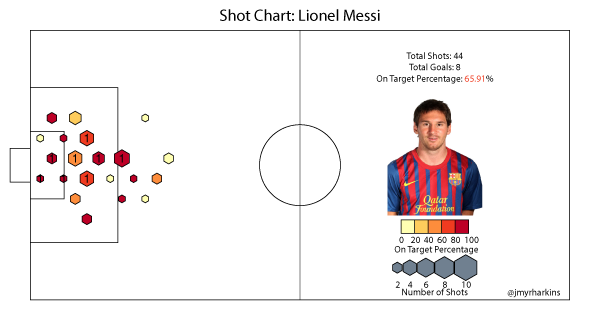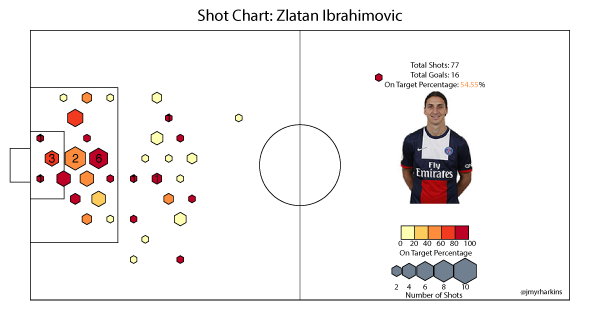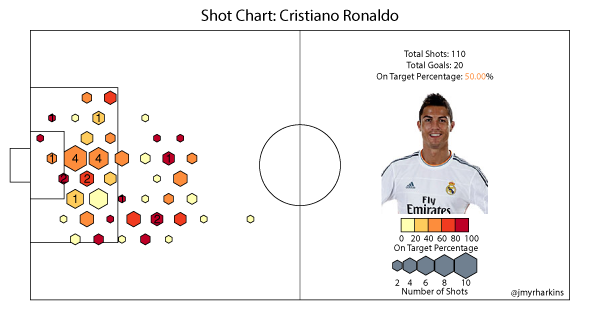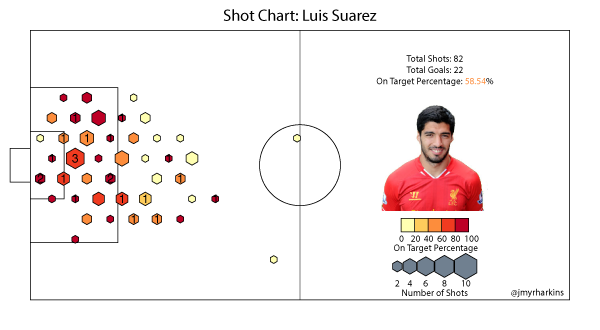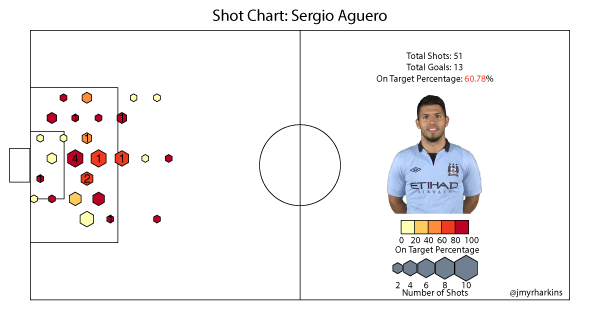The Championship, where time and narrative waits for no man. Those waiting for a larger sample of games to be played are just missing out on the good stuff, to be frank, as already we have a just-promoted side in the top two, a just-relegated side in the relegation zone, and a potential runaway train steered by El Loco. I’ll say it now so I don’t have to say it again: it’s six games, therefore these takes will be coming hot and without robust statistical significance. Though I probably will say it again later anyway.
Leeds
Y’know that Pep Guardiola guy? Back to back Premier League titles guy? The one who accrued the highest and second highest points tallies in Premier League history? Spent nine figures on full backs in a single summer that one time? Yeah, that guy. Well, on both occasions his Manchester City side won the title they did so with dominant expected goal differences that were standout above the rest of their rivals, translating to dominant title wins on the pitch. Leeds might just be about to do that to the Championship. By the vast majority of the performance metrics that we know translate best to projecting future performance, Leeds were the best side in the Championship last season – they had the joint best attack by expected goals and stood alone as having the best defence as well, based on the chances they created and conceded. This season, they’re looking even better. By a significant margin. The reason Man City have been mentioned is because Leeds’s numbers are well and truly in that realm, so let’s ignore the tiny sample and have fun projecting what the outcomes of this level of domination might look like if they keep it up for the remaining 40 league games. To really drive the level of dominance home, all things remaining equal and shots being converted as expected, Leeds would finish in and around the Championship points record – 106 by Reading in 2005-06 – and that’s _without_ any positive variance in their conversion rates. If their finishers and goalkeeper were to have a good season, then they’d likely smash it. Now with that ridiculous speculation out of the way (though yes, of course I will be sharing the link to this piece in May should they break the record), let’s zoom in a bit more. Bielsa’s boys have “beaten” their opponents on expected goals and in the shot count in each of their games so far and none of the opposition have really got close to them by those measures. They’ve outshot their opponents 106-43 but look closer and it gets kind of hilarious. In five of their six games, they’ve limited their opponents to seven (seven!) shots or less, with the apparent exception being Bristol City who managed 13. That is, except Bristol City are not actually an exception. Look a little closer into that game and Bristol City had managed four shots, two of which were direct free kicks, in the time that it took Leeds to race into a 3-0 lead, with the remaining nine being notched in the final 20 minutes from that point onwards. Of course, the West Yorkshire side have actually lost a game this season but put it this way, should they continue to play like this, I wouldn’t expect them to lose too many more this season.
 Stoke
Stoke
From the top, to the bottom. Languishing in 24th place is last season’s pre-season title favourites Stoke City who this time around were expected to make a much better fist of challenging for promotion than they managed in last season’s demoralising 16th place finish. This campaign, of course, under Nathan Jones who replaced Gary Rowett in the first week of January and whose ‘new manager bounce’ was more of a shrug as Stoke played their way into the summer by not conceding many goals but not scoring many either, recording a W2 D11 L2 return from their final 15 games to close the season out. With the second lump of parachute payments lobbed into their coffers and a well-regarded, young manager at the helm, this season’s haul of a single point after six games has threatened to derail their promotion charge whilst August is still clearly visible in the rear-view mirror. There are two ways to look at the current predicament Stoke find themselves in, a classic “two things can be true” StatsBomb special. The first is a perfectly valid point that Stoke are the victims of repeated poor goalkeeping errors from Jack Butland and also of just bad variance in that their opponents have finished chances pretty well otherwise, by expected goals, Stoke would be expected to most often concede around six or seven goals based on the chances they’ve conceded so far, but the post-shot model, taking into account shot placement, bumps this up to around 11. 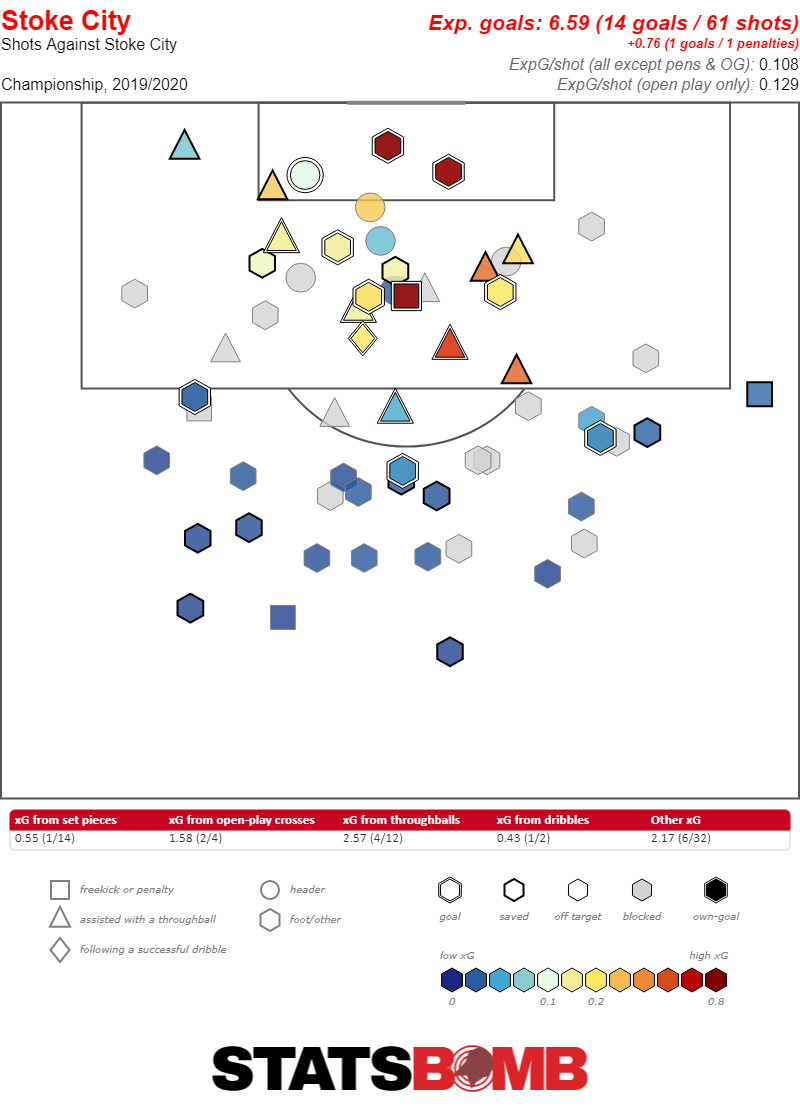 If we imagine for a second that the Potters’ opponents hadn’t finished their chances as well as they have done and that Adam Federici had started the season in goal rather than Butland, then it doesn’t take a massive leap in the mind’s eye to consider that Stoke very likely wouldn’t have conceded as many and would therefore have a few more points on the board. Which brings us onto the other true thing of the two true things. Even if Stoke had a few more points, are they really performing to a standard that would suggest they’re actually fine? The answer really depends on your expectations of what they should be achieving this season. Some believe, given their resources and recent Premier League status, that the minimum expectation should be a promotion challenge of some kind, at the very least in the play-off picture. More generous observers take a longer term view, able to justify a failed play off push if there is enough tangible improvement in a team that has seen large player turnover and whose playing philosophy is being dragged in yet another new direction by the guidance of a new coach, with a strong promotion push coming the season after. By the first point of view, Stoke are falling short so far and by the second, well, there hasn’t been much encouragement so far (blue line indicates the start of Jones’s tenure).
If we imagine for a second that the Potters’ opponents hadn’t finished their chances as well as they have done and that Adam Federici had started the season in goal rather than Butland, then it doesn’t take a massive leap in the mind’s eye to consider that Stoke very likely wouldn’t have conceded as many and would therefore have a few more points on the board. Which brings us onto the other true thing of the two true things. Even if Stoke had a few more points, are they really performing to a standard that would suggest they’re actually fine? The answer really depends on your expectations of what they should be achieving this season. Some believe, given their resources and recent Premier League status, that the minimum expectation should be a promotion challenge of some kind, at the very least in the play-off picture. More generous observers take a longer term view, able to justify a failed play off push if there is enough tangible improvement in a team that has seen large player turnover and whose playing philosophy is being dragged in yet another new direction by the guidance of a new coach, with a strong promotion push coming the season after. By the first point of view, Stoke are falling short so far and by the second, well, there hasn’t been much encouragement so far (blue line indicates the start of Jones’s tenure). 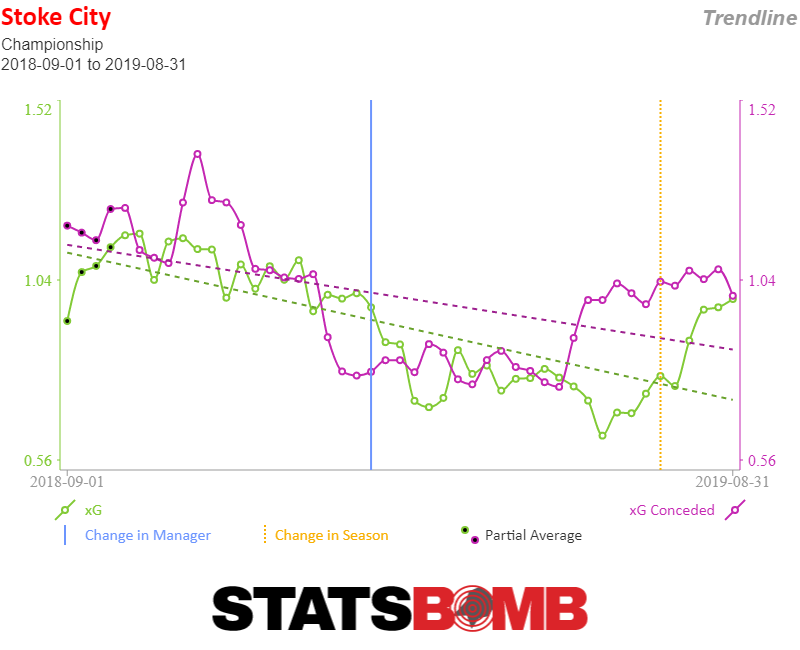 What Jones will be cursing is that this vexatious run will have cost him time and patience, two things he may need to complete the turnaround.
What Jones will be cursing is that this vexatious run will have cost him time and patience, two things he may need to complete the turnaround.
Charlton
League One play-off winners Charlton are worth touching on, having done their survival chances the world of good by taking 14 points from the opening 18 available. What’s powered that is some freaky stuff, but that’s what them small samples can do to ya. To benchmark the following, consider that Charlton have W4-D2-L0, scoring nine non-penalty goals and conceding five. Now consider that they’ve taken 47 shots and conceded 99. Bit of a discrepancy there, but naturally the quality of those shots matters though and Charlton do actually lead the league in creating the highest quality of chance on average (xG per shot), with very little wastage on their shot map. 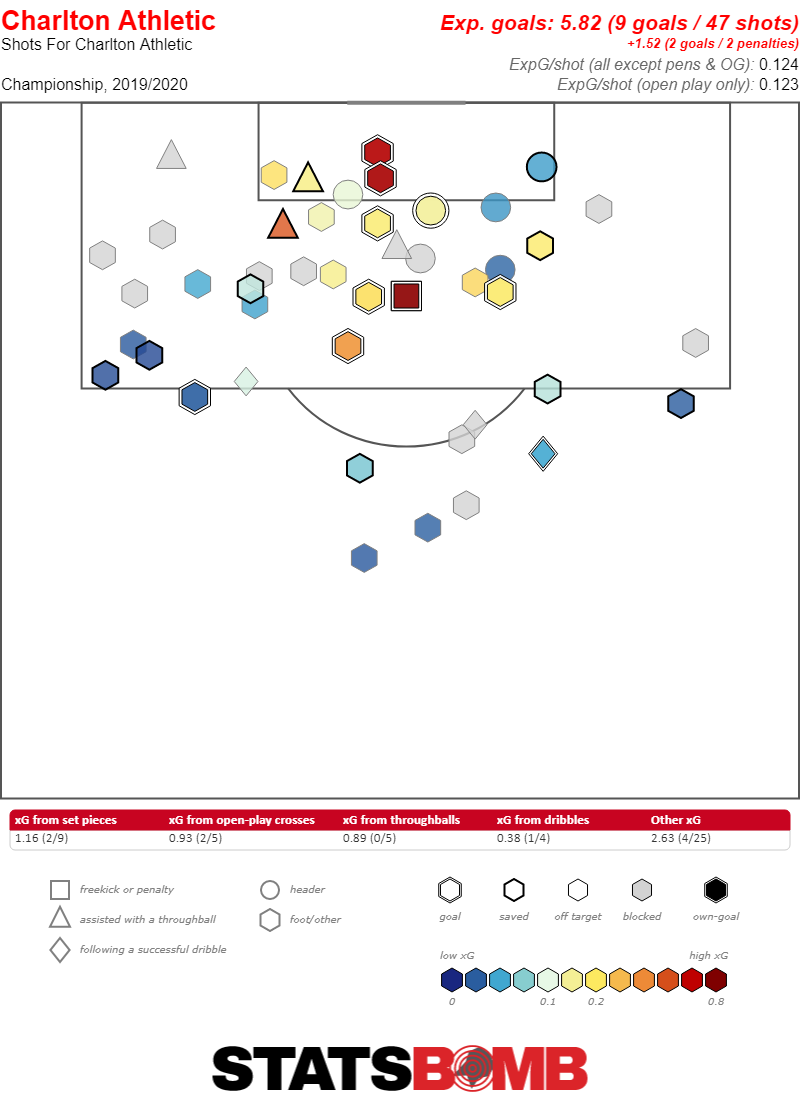 It’s another reminder of the impact a good or bad start can have on framing the rest of the season. Before a ball had been kicked, Charlton were one of the relegation favourites and survival would’ve been a celebrated achievement. Now, pick up points at the rate that was initially expected of them and they probably finish in the top half.
It’s another reminder of the impact a good or bad start can have on framing the rest of the season. Before a ball had been kicked, Charlton were one of the relegation favourites and survival would’ve been a celebrated achievement. Now, pick up points at the rate that was initially expected of them and they probably finish in the top half.
An update on the relegated
A real mix of results so far for the three outfits freshly ejected from the top tier. Fulham have settled well, with Scott Parker taking a leaf out of the 2017-18 promoted Fulham side by employing a similar shape and set of principles; looking to dominate possession and maximise the skillset of midfield conductor Tom Cairney. Currently sat in sixth and with a healthy looking +0.45 expected goal difference per game (4th best at this early stage), there’s little reason to throw any doubt on a potential immediate top flight return at this point. Really though you’re all just here to see the pass map from their 4-0 win over Millwall in which they broke records for the amount of possession they had, aren’t you. 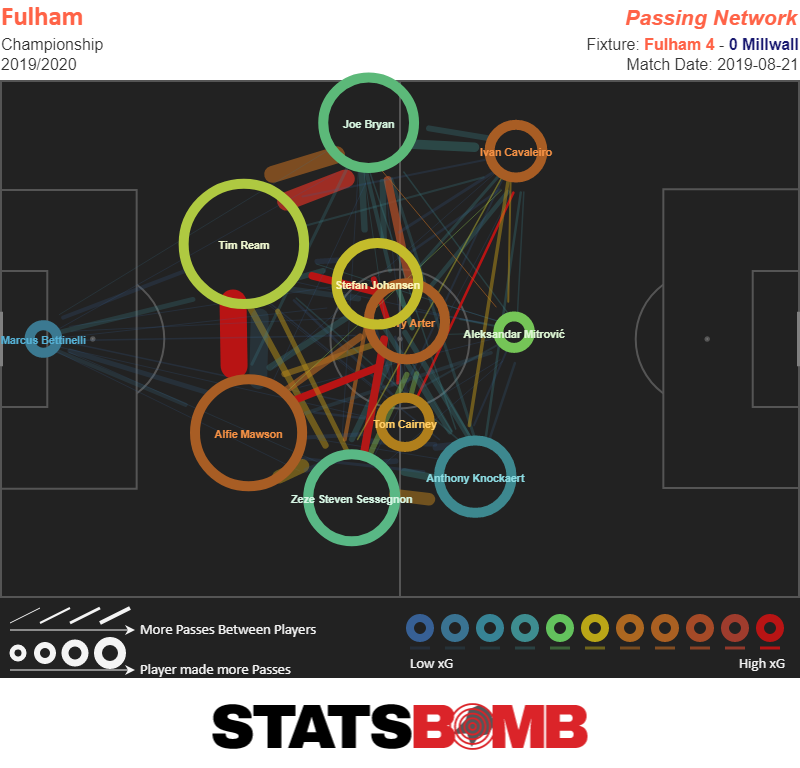 Cardiff have been a little more lukewarm but through six games appear on the positive side of their expected goal difference at least, so whilst better results would’ve offered more encouragement, there appears to be a foundation for Warnock to build on. That said, deserved away defeats at Reading and Wigan, both of which were poor defensive performances, have understandably dampened supporters’ enthusiasm. And then we come to Huddersfield, who’d had enough of Jan Siewert three games into the campaign, no less, and who accompany Stoke at the bottom of the table, also on one point through six games. In come Danny & Nicky Cowley from Lincoln City to replace the departed Siewert. The Cowley brothers are on the back of achieving two promotions in three seasons at Lincoln and in turn have been developing a strong reputation further down the league pyramid. In the short term, their remit is eight letters and three words: Win. A. Game. Terriers fans have celebrated precisely one league win since November last year and Sunderland fans will tell you what can happen if you don’t arrest a run like that quickly in this division. And that’s you up to speed with the early headlines from England’s second tier. It promises to be another frantic one.
Cardiff have been a little more lukewarm but through six games appear on the positive side of their expected goal difference at least, so whilst better results would’ve offered more encouragement, there appears to be a foundation for Warnock to build on. That said, deserved away defeats at Reading and Wigan, both of which were poor defensive performances, have understandably dampened supporters’ enthusiasm. And then we come to Huddersfield, who’d had enough of Jan Siewert three games into the campaign, no less, and who accompany Stoke at the bottom of the table, also on one point through six games. In come Danny & Nicky Cowley from Lincoln City to replace the departed Siewert. The Cowley brothers are on the back of achieving two promotions in three seasons at Lincoln and in turn have been developing a strong reputation further down the league pyramid. In the short term, their remit is eight letters and three words: Win. A. Game. Terriers fans have celebrated precisely one league win since November last year and Sunderland fans will tell you what can happen if you don’t arrest a run like that quickly in this division. And that’s you up to speed with the early headlines from England’s second tier. It promises to be another frantic one.
